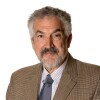What’s wrong with American liberalism? What happened to the self-assured, optimistic, and practical Democratic Party of Franklin D. Roosevelt, Harry Truman, and John F. Kennedy? Why has Joe Lieberman, their closest contemporary incarnation, been run out of the party? How did anti-Americanism infect schools, the media, and Hollywood? And whence comes the liberal rage that conservatives like Ann Coulter, Jeff Jacoby, Michelle Malkin, and the Media Research Center have extensively documented?
James Piereson. |
In a tour de force, James Piereson of the Manhattan Institute offers an historical explanation both novel and convincing. His book, Camelot and the Cultural Revolution: How the Assassination of John F. Kennedy Shattered American Liberalism (Encounter), traces liberalism’s slide into anti-Americanism back to the seemingly minor fact that Lee Harvey Oswald was neither a segregationist nor a cold warrior but a communist. Here’s what Piereson argues:
During the roughly forty years preceding the Kennedy assassination on November 22, 1963, progressivism/liberalism was the reigning and nearly only public philosophy; Kennedy, a realistic centrist, came out of an effective tradition that aimed, and succeeded, in expanding democracy and the welfare state.
In contrast, Republicans like Dwight Eisenhower lacked an intellectual alternative to liberalism and so merely slowed it down. The conservative “remnant” led by William F. Buckley, Jr. had virtually no impact on policy. The radical right, embodied by the John Birch Society, spewed illogical and ineffectual fanaticism.
Kennedy’s assassination profoundly affected liberalism, Piereson explains, because Oswald, a New Left-style communist, murdered Kennedy to protect Fidel Castro’s rule in Cuba from the president who, during the Cuban missile crisis of 1962, brandished America’s military card. Kennedy, in brief, died because he was so tough in the cold war. Liberals resisted this fact because it contradicted their belief system and, instead, presented Kennedy as a victim of the radical right and a martyr for liberal causes.
This political phantasm required two audacious steps. The first applied to Oswald:
- Ignoring his communist outlook by characterizing him as an extreme rightist. Thus, New Orleans district attorney Jim Garrison asserted that “Oswald would have been more at home with Mein Kampf than Das Kapital.”
- Reducing his role to insignificance by (1) theorizing about some sixteen other assassins or (2) spinning a giant conspiracy in which Oswald was a dupe of the mafia, the Ku Klux Klan, anti-Castro Cubans, White Russians, Texas oil millionaires, international bankers, the CIA, the FBI, the military-industrial complex, the generals, or Kennedy’s successor, Lyndon Johnson.
With Oswald nearly deleted from the narrative, or even turned into a scapegoat, the ruling establishment – Johnson, Jacqueline Kennedy, J. Edgar Hoover, and many others – proceeded to take a second, astonishing step. They blamed the assassination not on Oswald the communist but on the American people, and the radical right in particular, accusing them of killing Kennedy for his being too soft in the cold war or too accommodating to civil rights for American blacks. Here are just four of the examples Piereson cites documenting that wild distortion:
- Chief Justice Earl Warren decried the supposed “hatred and bitterness that has been injected into the life of our nation by bigots.”
- Senate majority leader Mike Mansfield raged against “the bigotry, the hatred, prejudice and the arrogance which converged in that moment of horror to strike him down.”
- Congressman Adam Clayton Powell advised, “Weep not for Jack Kennedy, but weep for America.”
- A New York Times editorial lamented “The shame all America must bear for the spirit of madness and hate that struck down President John F. Kennedy.”
In this “denial or disregard” of Oswald’s motives and guilt, Piereson locates the rank origins of American liberalism’s turn toward anti-American pessimism. “The reformist emphasis of American liberalism, which had been pragmatic and forward-looking, was overtaken by a spirit of national self-condemnation.”
Viewing the United States as crass, violent, racist, and militarist shifted liberalism’s focus from economics to cultural issues (racism, feminism, sexual freedom, gay rights). This change helped spawn the countercultural movement of the late 1960s; more lastingly, it fed a “residue of ambivalence” about the worth of traditional American institutions and the validity of deploying U.S. military power that 44 years later remains liberalism’s general outlook.
Thus does Oswald’s malign legacy live on in 2007, yet harming and perverting liberalism, still polluting the national debate.
Nov. 22, 2007 addendum: It did not fit the article but this quote of Jacqueline Kennedy’s, on learning the identity of her husband’s assassin, sums up the problem: “He didn’t even have the satisfaction of being killed for civil rights. It had to be some silly little Communist.” Silly little Communist?
Nov. 22, 2013 update: For all my work on this topic, see “Bibliography – My Writings on John F. Kennedy.”








